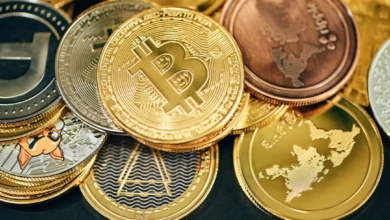Navigating Inflation and Debt: Understanding Its Impact on Repayment Strategies and Financial Security

Inflation is a persistent economic phenomenon that influences various aspects of our financial landscape, most notably personal and national debt repayment. As the cost of living continues to rise, understanding the causes and types of inflation—such as wage inflation, hyperinflation, and stagflation—becomes crucial for navigating these challenges. Inflation can severely impact both how individuals manage their debts and how governments approach fiscal policy, especially in times of economic uncertainty.
In this article, we will delve into the intricate relationship between inflation and debt, exploring how inflation metrics like the Consumer Price Index (CPI) and Producer Price Index (PPI) shape debt repayment strategies. We will also examine the role of interest rates as tools of monetary policy employed by central banks to manage inflation expectations and stimulate economic growth. Additionally, as inflation concerns loom large, we will highlight effective inflation-proof investments that can help safeguard your finances against rising costs—whether due to supply chain disruptions, soaring energy and food prices, or currency devaluation. Join us as we unravel the complexities of inflation and its far-reaching effects on both personal and national debt.
- 1. Understanding Inflation: Causes, Types, and Its Impact on Personal and National Debt Repayment
- 2. Inflation Metrics and Economic Growth: How CPI, PPI, and Interest Rates Influence Debt Strategies
- 3. Inflation-Proof Investments: Strategies for Protecting Your Finances Amid Rising Costs and Debt Concerns
1. Understanding Inflation: Causes, Types, and Its Impact on Personal and National Debt Repayment
Inflation is a critical economic phenomenon that can significantly influence both personal and national debt repayment. Understanding inflation requires examining its causes, types, and the broader implications for borrowers and lenders alike.
Causes of inflation can range from demand-pull factors, where demand outstrips supply, to cost-push elements, such as rising energy prices and food prices due to supply chain disruptions. Additionally, currency devaluation can exacerbate inflation, leading to increased costs for imported goods and higher overall expenses for consumers. Central banks often monitor inflation metrics like the Consumer Price Index (CPI) and the Producer Price Index (PPI) to gauge price changes and adjust monetary policy accordingly.
There are several types of inflation to consider. Hyperinflation, characterized by exceptionally high and typically accelerating rates of inflation, can lead to a rapid decrease in the purchasing power of money. Stagflation, on the other hand, combines stagnant economic growth with high inflation and unemployment, creating a challenging environment for debt repayment. Disinflation, which refers to a slowdown in the rate of inflation, can also impact how individuals manage their debt and savings.
Inflation affects personal debt repayment in multiple ways. As the cost of living rises, wage inflation may not always keep pace, leaving borrowers with less disposable income to manage their debts. For national debt, high inflation can reduce the real value of outstanding debt, making it easier for governments to repay obligations. However, if inflation expectations become entrenched, interest rates may rise, leading to increased borrowing costs.
Investors often seek inflation-proof investments, such as real estate or inflation hedging strategies, to safeguard their retirement savings against rising prices. The interplay between inflation and debt is crucial, as economic growth can either mitigate or exacerbate the challenges posed by rising inflation. Understanding global inflation trends and the impact of fiscal policy can help individuals and nations develop effective inflation strategies to navigate these economic complexities.
In summary, inflation's diverse causes and types play a pivotal role in shaping personal and national debt repayment dynamics. By staying informed about inflation trends and the associated economic factors, borrowers can better position themselves to manage their financial obligations in an evolving economic landscape.
2. Inflation Metrics and Economic Growth: How CPI, PPI, and Interest Rates Influence Debt Strategies
Inflation metrics play a crucial role in shaping debt strategies for both individuals and governments. Understanding the Consumer Price Index (CPI) and the Producer Price Index (PPI) can help individuals navigate the complexities of inflation and debt repayment. CPI measures the average change over time in the prices paid by consumers for a basket of goods and services, while PPI reflects the average change in selling prices received by domestic producers for their output. Both indices are essential in assessing inflation trends and making informed financial decisions.
CPI directly impacts the cost of living, influencing wage inflation as workers demand higher salaries to keep pace with rising prices. This, in turn, affects personal debt levels as consumers may rely more on credit to maintain their standard of living during periods of high inflation. Similarly, PPI can signal increasing costs for businesses, potentially leading to higher prices for consumers and affecting their ability to repay debt.
Interest rates, controlled by central banks through monetary policy, are another critical factor in debt management. When inflation expectations rise, central banks may increase interest rates to curb inflationary pressures. Higher interest rates elevate borrowing costs, making it more challenging for both individuals and governments to manage their debt. Conversely, during periods of disinflation or stagflation, where inflation is low or stagnant, central banks may lower interest rates to stimulate economic growth, making debt repayment more manageable.
Moreover, inflation metrics can indicate broader economic conditions influenced by global inflation trends, such as supply chain disruptions, energy prices, and food prices. These factors not only impact inflation but also have implications for fiscal policy, as governments may need to adjust spending and taxation to address rising costs and support economic growth.
For those looking to safeguard their finances, exploring inflation-proof investments becomes essential. Real estate, gold, and digital currencies are often considered effective inflation hedging strategies. By understanding the nuances of inflation metrics and their relationship with economic growth and debt, individuals can develop comprehensive inflation strategies to protect their retirement savings and manage personal debt effectively.
In summary, the interplay between inflation metrics, interest rates, and economic growth shapes the landscape for debt repayment strategies. Awareness of these elements allows both individuals and governments to adapt to changing economic conditions and make informed financial decisions.
3. Inflation-Proof Investments: Strategies for Protecting Your Finances Amid Rising Costs and Debt Concerns
As inflation continues to impact both personal and national debt repayment, it becomes crucial to explore inflation-proof investments that can help protect your finances. Inflation, defined as the general increase in prices and fall in the purchasing value of money, can significantly erode the value of cash and savings, making it essential to adopt strategic measures.
One effective strategy is to invest in real estate, which historically tends to appreciate in value even during inflationary periods. Real estate inflation often outpaces general inflation rates, providing a hedge against rising costs. Additionally, rental income can offer a steady cash flow, which is especially beneficial when wage inflation occurs, allowing your income to keep pace with increasing living costs.
Another viable option is to consider commodities, such as gold and silver, which have long been viewed as safe havens during inflationary times. These assets typically maintain their value or increase in worth when inflation metrics, such as the Consumer Price Index (CPI) or Producer Price Index (PPI), show rising trends. With global inflation trends causing fluctuations in energy prices and food prices, investing in tangible assets can mitigate the risks posed by currency devaluation.
For those looking towards modern solutions, digital currencies have emerged as a unique investment avenue. While they remain volatile, some investors view cryptocurrencies as a form of inflation hedging. The decentralized nature of digital currencies can protect against traditional monetary policy and fiscal policy shifts made by central banks, particularly in environments marked by hyperinflation or stagflation.
Lastly, diversifying your investment portfolio is crucial. By including a mix of stocks, bonds, and inflation-linked securities, you can better position yourself against economic uncertainty. Inflation expectations often influence interest rates, and being proactive in adjusting your investment strategies can help maintain your financial health amidst rising costs.
In conclusion, protecting your finances against inflation and debt concerns involves a multifaceted approach. By focusing on inflation-proof investments such as real estate, commodities, digital currencies, and diversified portfolios, you can safeguard your retirement savings and ensure that your financial future remains secure despite the pressures of inflation.
In conclusion, understanding the intricate relationship between inflation and debt repayment is crucial for both individuals and nations. As we’ve explored, inflation can significantly impact how personal and national debts are managed, influenced by various causes and types of inflation, including wage inflation, hyperinflation, stagflation, and disinflation. Economic indicators such as the Consumer Price Index (CPI) and Producer Price Index (PPI) serve as vital inflation metrics that guide monetary and fiscal policy decisions, shaping effective debt strategies.
As inflation continues to shape global economic trends—driven by factors like supply chain disruptions and fluctuating energy and food prices—it's essential to adopt inflation-proof investments. By diversifying portfolios with real estate, digital currencies, and other inflation hedging assets, individuals can safeguard their retirement savings and overall financial health against rising costs.
Ultimately, staying informed about inflation expectations and historical inflation trends will empower you to make strategic financial decisions. Whether you're navigating personal debt or assessing national fiscal policies, developing a robust understanding of inflation's impacts will help ensure your financial resilience in an ever-changing economic landscape. By leveraging inflation strategies and monitoring interest rates, you can effectively manage your debt and thrive, even amidst the challenges posed by inflation.





